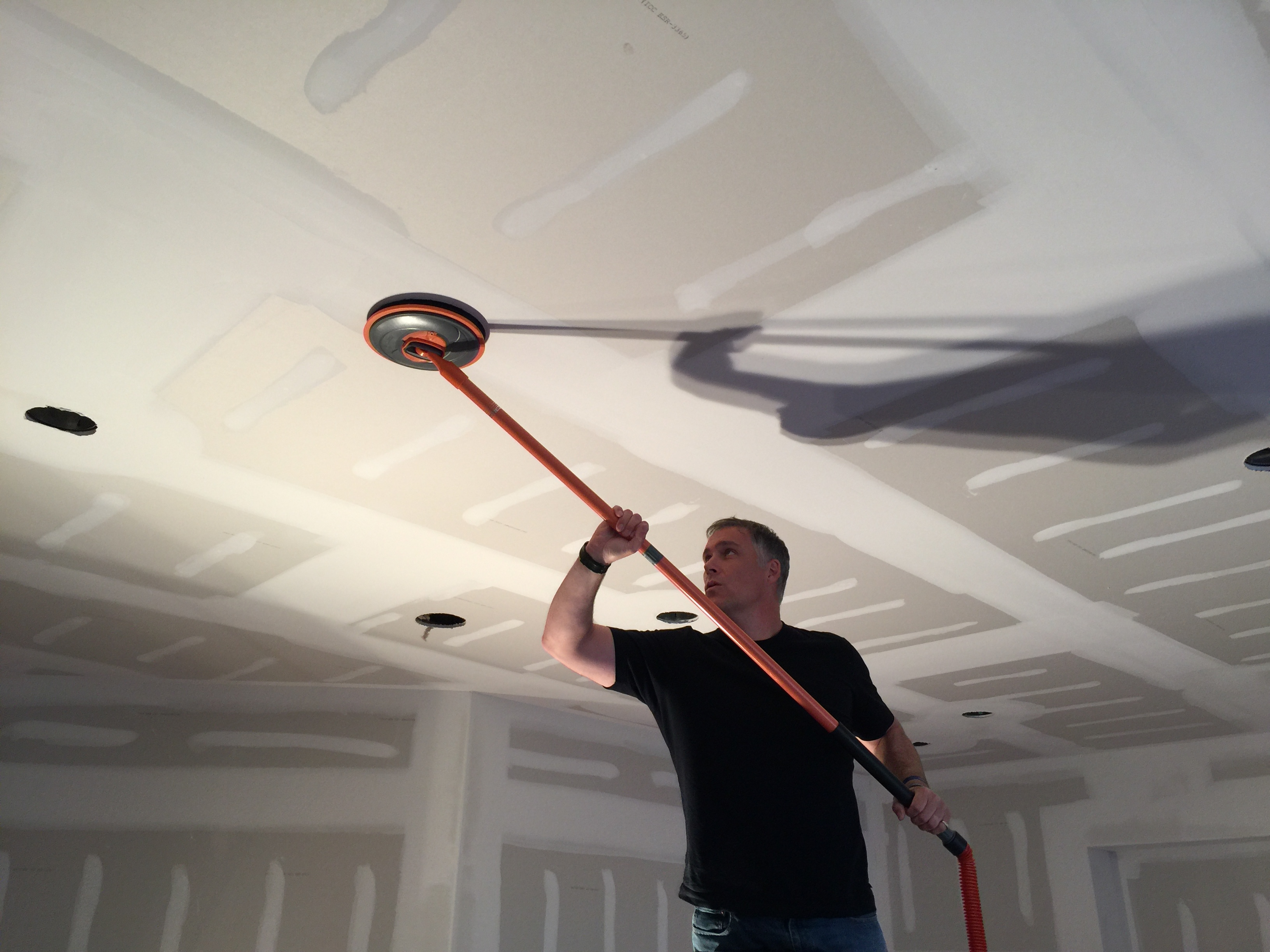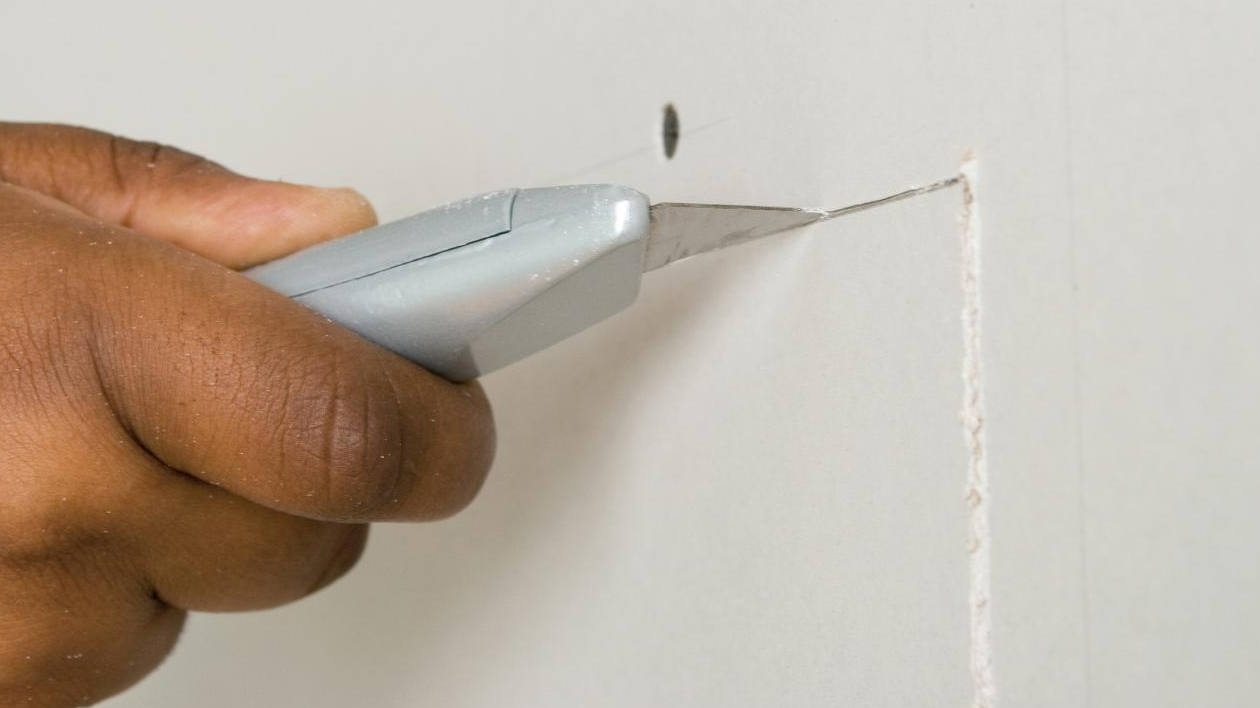Let’s make it easy for you to start sanding if you’ve never really learned how.
To start with, choose the right sandpaper – coarse or fine. Coarse has larger aluminium oxide particles, which means you’ll be sanding faster and with more aggression. When you’re ready for the finishing touches, you’ll want to go for a fine grit paper. Be patient with it, and you’ll be polishing the surface to a lovely smooth end product.
You can use paper on its own of course, or wrapped around a block for more stability. If you have a larger area to sand, it’s worth using a tool, such as an orbital sander, which also have a dustless system keeping you safe.
Sanding tools can be fitted with all kinds of accessories, depending on the surface you’re sanding. A sanding disc, for example, isn’t as heavy duty than a sanding band. An abrasive brush will work on a surface layer without causing harm below that surface. Perfect for sanding down drywall after yoru taping and jointing.
Take care, because sanding inevitably creates dust in the air, which isn’t nice to breathe in anyway, but especially when you know some of those particles could be toxic. A face mask is a great way to keep the dust inhalation to a minimum, and plastic goggles are a good idea to protect your eyes, safety first!
This is also applicable when cutting drywall to the size you require. When using a drywall jab saws and rasps to smooth off your edges, remember to wear the relevant PPE to protect yourself. Also make sure you’re wearing gloves to keep your hands safe.
A vacuum cleaner is going to be vital, to avoid particles make their way into your paintwork or accumulating in the area you’re trying to clean. Give it a vacuum to remove most of the sanding dust, and then with a damp cloth give it a bit of a wipe to finish it off.
Everything you need is available from the Gypsum Tools site. We stock a range of sanding tools and accessories, including heavy duty kit such as the Giraffe Wall & Ceiling Sander, which has full safety features, as well as speed selection controls.If you’re working on some drywall sanding and you want a more manual approach, the Full Circle Flex Edge Multi-Layered Drywall Sanding Tool is going to be perfect. Or if you’re simply DIY’ing we have loads of sanding blocks and more.
We sell foam replacement pads for this type of project, as well a range of sandpaper sheets. But even if you’re planning a small scale sanding project, we can help you with hand sanders, and sanding tools and supplies to fit the job. Just let us know exactly what you need and we’ll be happy to help!



